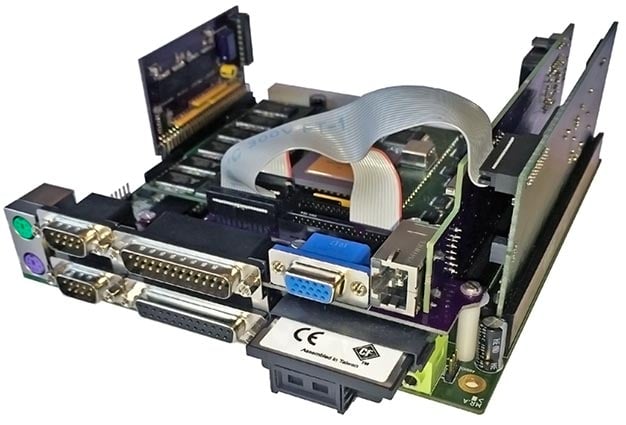Classic Amiga Gets Modernized With Custom Amy-ITX Motherboard Project
Unlike other modern pieces of Amiga-related hardware, like the Vampire or MiST, which use FPGAs (Field Programmable Gate Arrays) to simulate the custom Amiga chipsets of old, or A-EON AmigaOne systems that use PowerPC hardware to run the latest versions of AmigaOS, the Amy-ITX project uses actual, classic Amiga hardware – sort of.
Technically, Amy-ITX is only a PCB (printed circuit board). It conforms to the mini-ITX form factor (170×170 mm) and works with a standard ATX power supply. When fully assembled, it features two Zorro II compatible slots, PS/2 connectors for Amiga or PC compatible input devices, dual DB9 Amiga mouse/joystick ports, DB25 serial and parallel ports, a standard internal Amiga floppy connector, a 3.5mm audio jack, and a custom 15-pin A/V port, which saves some real estate versus the Amiga’s stock connectors.
To actually have a fully-functional system, however, the Amy-ITX also needs a Motorola (or compatible) 68000 processor, and all of the custom, classic Amiga chips from an Amiga 500+ or 600 including the “Gary” gate array, the “Paula” audio chip, the “Denise” (or Hires Denise) graphics chip, the “Agnus” address generator, a pair of MOS8520 CIA chips, and classic Kickstart ROMs. Collectively, the Paula, Denise, and Agnus chips are what comprised the original OCS and ECS Amiga chipsets, depending on what revision of the chips was used.
Though what eventually became the Amy-ITX has been in development in one form or another since 2010, the project developers put up a post a couple of days ago titled, “Go nuts, go wild – Go public!” that got some Amiga fans in a tizzy. The post said, “So we’ve been beating around the bush for far too long now…It’s time to give all of you wonderful Amiga Enthusiasts a taste of the good stuff. Here you have it – a bit of info on the “Made in Sweden” Mini-ITX Amy motherboard.”
Today, however, a clarification was posted that said there are currently no plans for a pre-order and an announcement would be made should the developers decide on a larger production run at some point. As it stands, only 25 Amy-ITX boards are in the hands of a few lucky Amiga aficionados with the skills necessary to assemble the complete motherboard.
Here’s hoping the developers decide to take the plunge. I’d jump at the chance to own an Amy-ITX and suspect many others would too.



